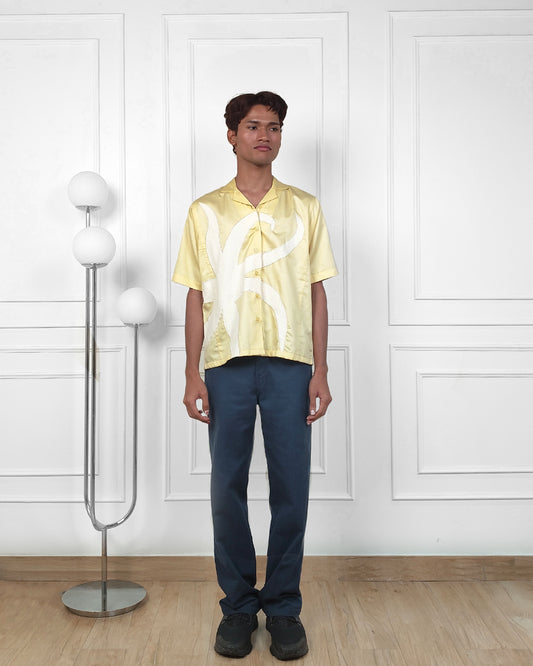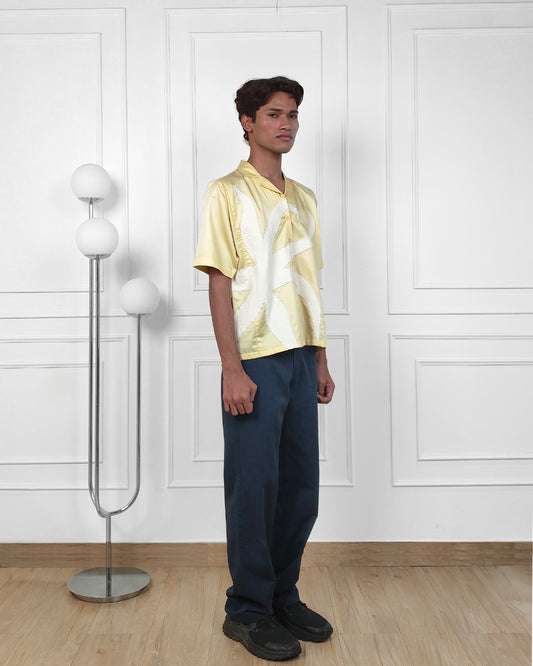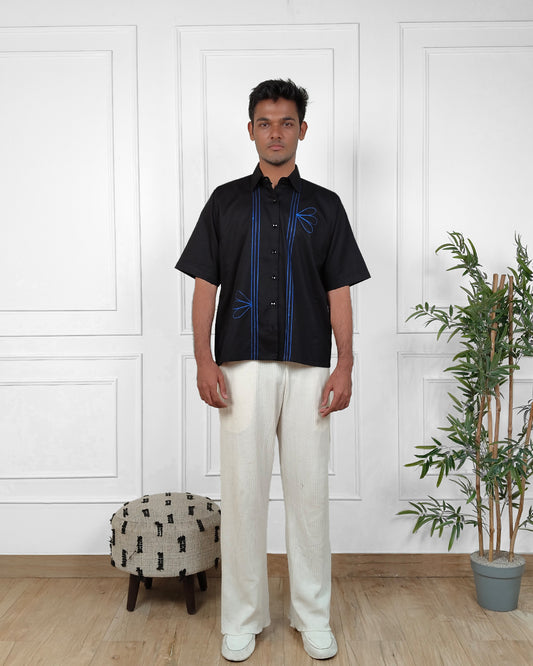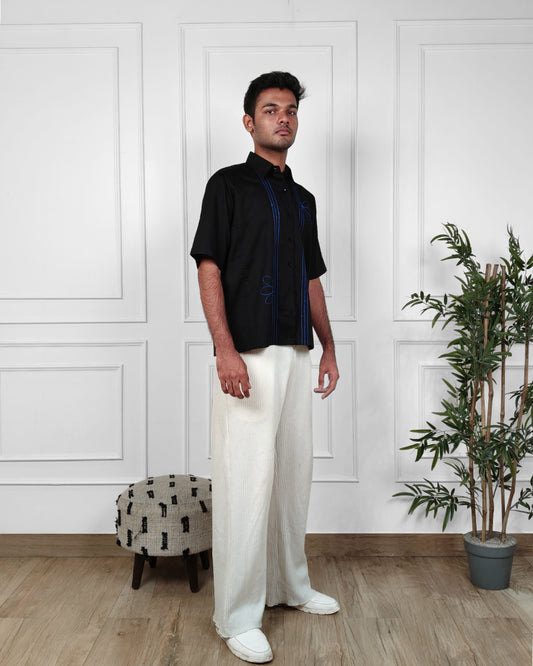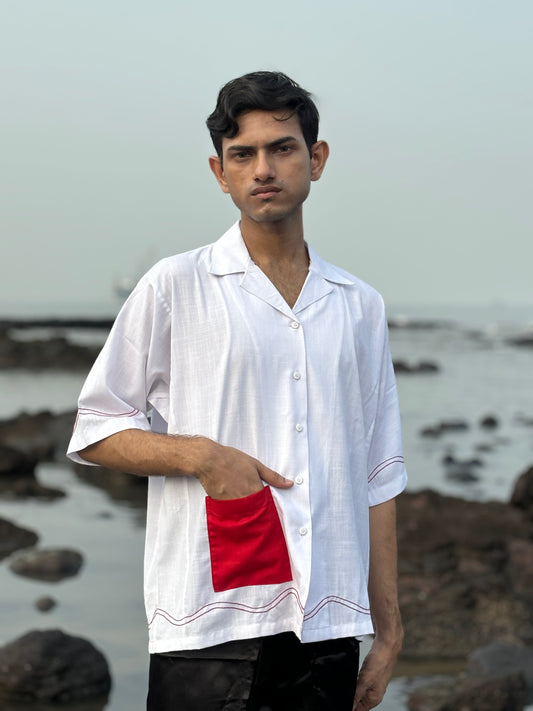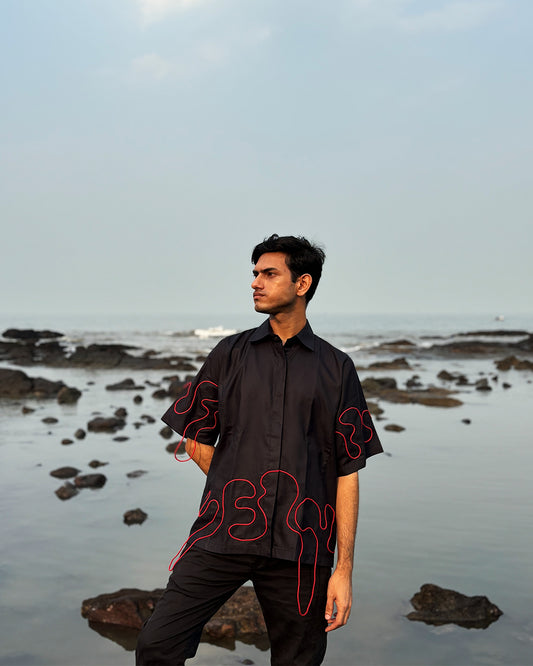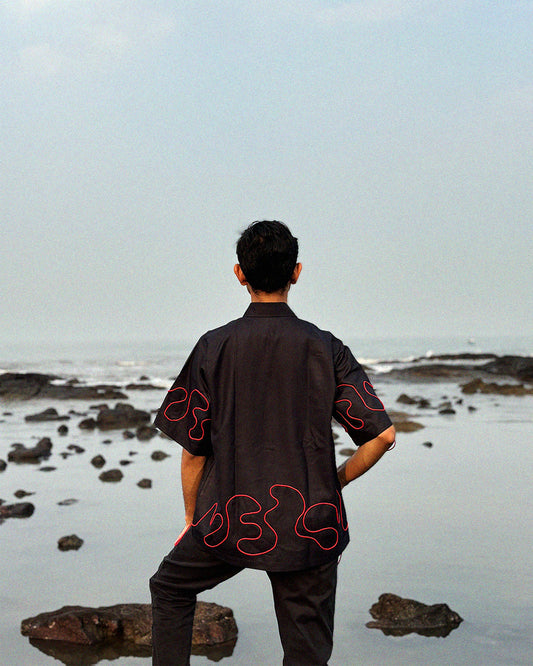
The Art of Embroidery: Preserving South Asian Heritage in Fashion
Embroidery has long been an integral part of South Asian culture, with each stitch carrying the weight of history, tradition, and artistic expression. More than just a decorative technique, embroidery serves as a form of storytelling, identity, and craftsmanship, passed down through generations. From the regal courts of the Mughal emperors to the rural households of skilled artisans, embroidery in South Asia has evolved yet retained its deep cultural roots.
This blog explores the diverse embroidery traditions of South Asia, their historical significance, techniques, motifs, fabrics, and colors. It also highlights how contemporary designers, including myself, incorporate these intricate crafts into modern, sustainable fashion while preserving the authenticity of these age-old techniques.
The Cultural Significance of Embroidery in South Asia
A Historical Legacy
Embroidery in South Asia dates back thousands of years, with evidence of decorative stitching found in the remains of the Indus Valley Civilization (circa 2500 BCE). The art form flourished under different dynasties, including the Mauryas, Guptas, and later the Mughals, who introduced Persian influences to the craft. Many embroidery styles became associated with particular regions and communities, often reflecting local customs, folklore, and social status.
During the Mughal era (16th–18th century), embroidery reached its peak, with Emperor Akbar and Jahangir promoting intricate styles such as Zardozi, a gold and silver thread embroidery fit for royalty. Similarly, the Nawabs of Lucknow patronized Chikankari, a delicate white-on-white embroidery that symbolized refinement and elegance.
A Storytelling Medium
South Asian embroidery often conveys deeper meanings through its motifs. Many designs are inspired by nature, mythology, and daily life, making them a visual narrative of the artisan’s cultural environment. For example, the Kantha embroidery of Bengal tells stories of rural life, gods, and family traditions, while Phulkari embroidery from Punjab celebrates agricultural abundance with floral and wheat motifs.
A Symbol of Identity and Heritage
Different embroidery styles are closely linked to specific regions and communities. Tribal groups in Gujarat and Rajasthan are known for their Shisha (mirror work) embroidery, where tiny mirrors are stitched onto fabric to ward off evil spirits. In Kashmir, Kashida embroidery is associated with the luxurious Pashmina shawls, which are treasured heirlooms passed down generations.
In many South Asian societies, embroidery is a skill learned from childhood, particularly among women. Handmade embroidery pieces are considered family heirlooms, worn at weddings and special occasions as a mark of tradition and craftsmanship.
Exploring South Asian Embroidery Traditions
1. Mirrorwork Embroidery (Gujarat & Rajasthan, India; Sindh, Pakistan)
Mirrorwork embroidery, also known as Shisha embroidery, is a captivating textile art that incorporates small mirrors or reflective materials into fabric through intricate stitching techniques. This craft is believed to have originated in the 17th century in India, with influences from Persian traditions. Over time, it became a hallmark of embroidery traditions in regions like Gujarat, Rajasthan, and Sindh, particularly among tribal communities such as the Rabari and Banjara.
The motifs in Mirrorwork embroidery often feature geometric patterns, floral designs, and abstract shapes, all designed to enhance the brilliance of the reflective surfaces. Traditionally, mirrors were believed to ward off evil spirits, adding a protective element to the decorative appeal. This technique is commonly applied to garments, home décor items, and accessories, with vibrant embroidery threads further amplifying its lively appearance.
- Artisans: Tribal communities, including the Rabari and Banjara groups
- Fabrics: Cotton, silk, and wool
- Colors: Bright and bold shades like red, yellow, blue, and green, often contrasted with metallic accents

Images - https://asufidmmuseum.asu.edu/learn/articles/mirrorwork-embroidery
BRAND HIGHLIGHT
ODITE - Young zero waste brands like Odite are taking South Asian embroideries and flipping its on its head. This zero waste shirt depicting the surrealistic idea of cherries turned into mirrors introduces new motifs to the centuries old craft thus contemporizing it. This way the craft is kept alive and the artisans are provided an opportunity to flaunt their skills perfected over generations. www.odite.in

2. Phulkari Embroidery (Punjab, India & Pakistan)
The word Phulkari translates to "flower work," perfectly capturing the essence of this vibrant embroidery style. Originating in Punjab, Phulkari embroidery is done using a simple darning stitch to create bold and colorful floral patterns. Traditionally, women embroidered Phulkari shawls as part of their wedding trousseau, making it a symbol of love and prosperity.
Phulkari embroidery is characterized by the use of brightly colored silk threads on handwoven cotton or khadi fabric. Red, orange, pink, and yellow are commonly used to reflect the vibrancy of Punjabi culture. During the Mughal period, Phulkari gained popularity, and it continues to be a cherished tradition in Punjabi households today.
- Artisans: Punjabi women, especially for wedding trousseaus
- Fabrics: Handwoven cotton and khadi
- Colors: Bright hues of red, pink, orange, and yellow

Images - https://globalinch.org/article/book-review-phulkari-from-punjab-traces-every-thread-of-punjabs-embroidery/ https://artcentron.com/2017/06/25/phulkari-embroidered-textiles/ http://theartblog.org/2017/04/embroidery-and-identity-come-together-in-philadelphia-museum-of-art-phulkari-show/
3. Chikankari Embroidery (Lucknow, India)
Chikankari is an elegant embroidery style that originated in Lucknow during the Mughal era. It is believed that Nur Jahan, the wife of Emperor Jahangir, introduced this art form in the 17th century. Chikankari is distinguished by its delicate white-on-white embroidery, which creates subtle floral and geometric patterns.
This embroidery is traditionally done on fine fabrics such as muslin, silk, and chiffon. The intricate patterns are created using a variety of stitches, including the shadow work technique, which gives a three-dimensional effect. Chikankari remains a hallmark of Lucknow’s textile heritage, often seen on sarees, kurtas, and dupattas.
- Artisans: Skilled craftsmen and women in Lucknow
- Fabrics: Muslin, chiffon, georgette, and silk
- Colors: Traditionally white-on-white, but modern variations include pastels and light shades

Images - https://www.theheritagelab.in/chikankari-embroidery/
4. Zardozi Embroidery (Mughal India, Persia Origin)
Zardozi is a luxurious embroidery technique that involves stitching gold and silver threads onto fabric to create opulent designs. This art form has its origins in Persia but flourished in India during the Mughal period, particularly under Emperor Akbar. Zardozi embroidery was used to decorate royal garments, wall hangings, and even furnishings.
The motifs in Zardozi embroidery often include intricate floral and paisley designs, sometimes combined with precious stones and pearls for added grandeur. Traditionally, Zardozi was practiced by artisans known as zardoz, who meticulously worked with metallic threads to create dazzling patterns. Today, Zardozi remains a favorite for bridal couture and ceremonial wear.
- Artisans: Skilled craftsmen known as zardoz
- Fabrics: Velvet, silk, satin, brocade
- Colors: Gold and silver on deep-colored fabrics like red, navy, and black
5. Kantha Embroidery (Bengal, India & Bangladesh)
Kantha embroidery is one of the oldest forms of embroidery in South Asia, originating from the Bengal region. Women traditionally stitched old saris and dhotis together with simple running stitches to create quilts, shawls, and covers. This form of embroidery was born out of necessity, as a way to upcycle worn-out textiles, making it one of the earliest examples of sustainable fashion.
Motifs in Kantha embroidery often depict everyday life, including flora, fauna, and mythological figures. The most common colors used are red, black, and blue on a white or off-white background. Though it was historically an informal craft practiced at home, Kantha embroidery has gained international recognition and is now seen on sarees, scarves, and contemporary fashion pieces.
- Artisans: Rural women in West Bengal and Bangladesh
- Fabrics: Layers of old cotton saris and dhotis
- Colors: White, with red, blue, and black embroidery

Images - https://local-moda.blogspot.com/2013/12/zardozi-ancient-art-of-metal-embroidery.html
Cultural Sustainability and Zero-Waste Techniques
Embroidery in South Asia is not just an art form but also a sustainable practice. Many traditional embroidery techniques focus on upcycling old textiles, reducing waste, and using natural dyes. Kantha embroidery, for example, repurposes worn-out saris into beautifully embroidered quilts, aligning with the principles of zero-waste fashion.
As a zero-waste designer, I integrate these traditional techniques into my work by using fabric scraps for hand-stitched embroidery, ensuring that nothing goes to waste. I also collaborate with artisans to preserve and promote their crafts in a contemporary fashion landscape. By supporting hand-embroidered designs, we not only keep these heritage crafts alive but also contribute to the livelihoods of skilled artisans.
Conclusion
South Asian embroidery is more than just decoration; it is a living tradition, a testament to artistry, and a connection to cultural heritage. By incorporating these techniques into modern, sustainable fashion, we ensure that these exquisite crafts continue to thrive for generations to come.
References:
-
Chaiversations.org. (2024). How Sustainable Fashion Has Always Been a Part of South Asian Culture. Available at: https://www.chaiversations.org/blog/how-sustainable-fashion-has-always-been-a-part-of-south-asian-culture/ [Accessed 7 March 2025].
-
Ekaya.in. (2023). Exploring the Rich Embroidery Techniques of India. Available at: https://ekaya.in/blogs/listings/exploring-the-rich-embroidery-techniques-of-india [Accessed 3 March 2025].
-
iTokri.com. (2023). Indian Embroidery and Its Great History. Available at: https://itokri.com/blogs/craft-masala-by-itokri/indian-embroidery-and-its-great-history-1 [Accessed 5 March 2025].
-
Khan Academy. (n.d.). Embroidery Traditions in British-Colonial South Asia. Available at: https://www.khanacademy.org/humanities/art-asia/south-asia/x97ec695a:textiles-from-the-indian-subcontinent/a/embroidery-traditions-in-british-colonial-south-asia [Accessed 12 March 2025].
-
Lakshita.com. (2024). The Evolution of Embroidery in Indian Ethnic Dresses. Available at: https://www.lakshita.com/blogs/the-lk-journal/the-evolution-of-embroidery-in-indian-ethnic-dresses [Accessed 12 March 2025].
-
Spheresofinfluence.ca. (2023). Reflecting on Sustainable Fashion Practices From Pakistani Culture. Available at: https://spheresofinfluence.ca/fashion-backwards-reflecting-on-sustainable-fashion-practices-from-pakistani-culture/ [Accessed 13 March 2025].
-
Textileschool.com. (2025). Kashida Embroidery: Tradition, Technique, and Transformation. Available at: https://www.textileschool.com/10200/kashida-embroidery-tradition-technique-and-transformation/ [Accessed 14 March 2025].
-
V&A Museum. (n.d.). Indian Embroidery. Available at: https://www.vam.ac.uk/articles/indian-embroidery [Accessed 15 March 2025].
-
Wikipedia. (2024). Embroidery of India. Available at: https://en.wikipedia.org/wiki/Embroidery_of_India [Accessed 16 March 2025].
-
YourLibaas.com. (2020). 10 Traditional Embroideries of India. Available at: https://www.yourlibaas.com/blogs/fashion/10-traditional-embroideries-of-india [Accessed 16 March 2025].

